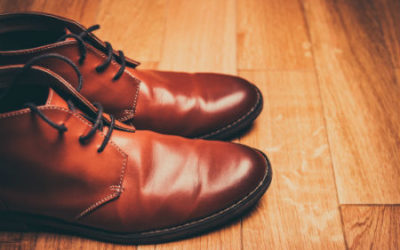What do you think of when you hear the word wedding? The first word to come to mind will probably be bride or wedding dress. Especially if we’re talking fashion. But it’s not just wedding dresses. There is a lot of important wedding fashion terminology for Spanish-English fashion translators to learn. Interested? Read on for the terms you need to know.
Wedding fashion doesn’t just mean the actual wedding dress. Obviously that’s a major part of it. As a translator, you’ll need to know the key bridalwear terms. And there are lots of them. Read my article about wedding dresses, “Translating Spanish-English Fashion: Bridalwear”, for lots of Spanish and English terminology for the dress and accessories.
But it wouldn’t be a wedding with just a bride! There’s a groom to design for, and maybe bridesmaids and page boys. Don’t forget fashions for the mother of the bride and other guests. So, let’s take a look at some key wedding terminology for Spanish-English fashion translators that goes beyond just the wedding dress.
The groom
Obviously, the bride and groom can wear anything they want. Bikini and Bermuda shorts for a beach wedding? Sure! But, the most common wedding apparel for men is some kind of suit.
This might be a jacket (chaqueta) or blazer (americana) and formal trousers (pantalón de vestir). For more details about suits and tailoring, read my article “Spanish-English Fashion Translation: Personal Tailoring”.
More formal weddings, like that of Prince Harry and Meghan Markle, usually involve more formal options. At weddings like these, the groom will wear morning dress, if not military dress. At his wedding, Prince Harry wore the military uniform of the Blues and Royals: blue doeskin (ante) frock coat (levita), black trousers with red stripe and a white buckskin belt with sword slings.Striped trousers are the norm for morning dress, but they can also be houndstooth.
Morning dress (chaqué) is formal wedding wear. Morning dress includes a white shirt with turned-down collar, double cuffs and cufflinks (gemelos). A waistcoat (chaleco) is a must, and it can be single breasted or double breasted. Waistcoats are a yellow-brown colour, known as buff (crema), grey or blue.
Striped trousers are the norm for morning dress, but they can also be houndstooth (pata de gallo). The morning coat is usually black or dark grey. It has notched lapels (solapa de muesca) or peak lapels (solapa de pico), with peak lapels seen as a more elegant option.
Shoes are black lace-up shoes, highly polished but never patent leather (de charol). A boutonnière or buttonhole (flor en el ojal) may be worn. Or a pocket square (pochette) in the left breast pocket.
Morning dress, as the name implies, is for daytime weddings. For evening weddings, a grey or black frock coat (levita) can be worn, or a tuxedo (esmoquin). Tuxedos have shawl lapels (solapa redonda) and these lapels should be satin (raso).
Pockets should be jet pockets (bolsillo de vivo). Flap pockets (bolsillo de solapa) aren’t formal enough. Tuxedos are worn with a white shirt with a spread collar (cuello italiano). And of course, a bowtie (pajarita).
Bridesmaids
Bridesmaids and page boys aren’t nearly as common in Spain as in other parts of the world, although they’re becoming more popular. For children, bridesmaid-style dresses and page boy-type outfits are often called ropa de ceremonia or ropa de boda.
Most weddings in the US and the UK involve a couple (or maybe a lot) of bridesmaids. As you may have heard, “Spain is different”. Spanish weddings don’t generally include bridesmaids, or not as we think of them (adult women who help the bride). Bridesmaids (damas de honor) tend to be children. They might be page boys (pajes) or ring bearers (niños de arras).
Fashions for little bridesmaids and page boys are as you would expect. Frilly dresses and ballet pumps (bailarinas) for the girls and smart trousers and shirts for the boys. Sometimes boys wear shirts with Mandarin collars (cuello mao).Spanish weddings don’t generally include bridesmaids.
Other female guests might wear formal dresses (vestido de fiesta) and possibly a fascinator (tocado) instead of a hat. There are also handbags to talk about. For weddings, a clutch or baguette bag (both untranslated in Spanish).
Some important guests (for fashion purposes, at least) are the mothers of the happy couple (madrinas). They wear formal dress, of course, with the usual accessories, like bags and heels and so on. They may also wear a mantilla veil with a high comb (peineta). For madrinas, the mantilla is traditionally black. For more information about mantilla veils, see my article about bridalwear, “Translating Spanish-English Fashion: Bridalwear”.
There’s lots more we could talk about. The world of wedding fashion is wide ranging. What with the wedding dress, the groom and all the guests, there’s lot of Spanish-English fashion terminology to discuss. Understanding those terms and getting them right in your work will help you stand out from the crowd! Don’t miss my other articles in this bridalwear and tailoring series. I’d love to hear your comments! I hope you’ve found this brief introduction useful! If you’d like more articles like this in your inbox, and translation news and updates, sign up for our newsletter in the box to the right.




0 Comments